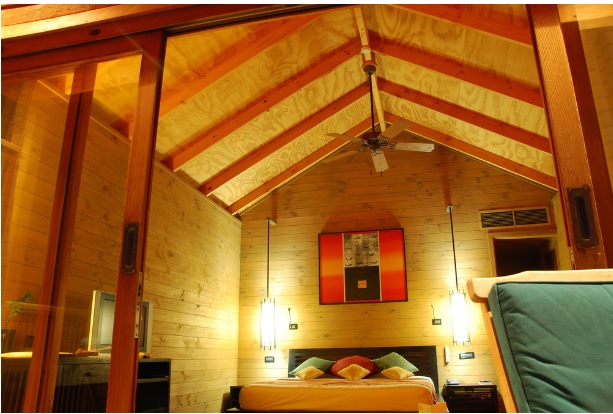
Humans are building houses better than any other time in history. Using enhanced materials and techniques, we can build residential structures that will withstand intense outdoor elements and require remarkably little maintenance for decades, perhaps centuries. Yet, there is one potential downside to the strength of our modern homes: poor air circulation.
Because our houses are so effective at keeping the outdoors out and the indoors in, the air we breathe can quickly become stale, which could result in poor health outcomes for you and your family. If you are interested in learning how good air circulation contributes to good health — and how you can improve air circulation in your home — read on.
How Indoor Air Becomes Unhealthy
When you breathe in, your lungs are taking in much-needed oxygen to fuel every one of your body’s cells. When you breathe out, your lungs are expelling waste products that cause your body harm. Unfortunately, in well-sealed interior environments, expelled air can accumulate rather quickly, to disastrous effect. Carbon dioxide, the primary component of exhaled air, is exceedingly toxic; environments with high concentrations of CO2 can cause respiratory arrest, causing a person to become unconscious and suffocate. If the body detects high amounts of CO2 in the air, the mind triggers an intense fear response, resulting in higher levels of anxiety and perhaps panic attacks. However, even just slightly elevated CO2 concentrations can cause dizziness, nausea and other uncomfortable and perhaps dangerous effects.
Your home fills up with CO2 faster than you might expect, especially if you rarely open doors and windows to let in fresh air. You might consider investing in a carbon dioxide detector, so you can keep track of the amount of CO2 in your space. If you notice that your home maintains CO2 levels above 5,000 parts per million for hours at a time, you need to take steps to improve ventilation and circulation.
Aside from CO2, there are dozens of other indoor pollutants that can pose significant health risks. Many materials used in home construction and furnishing can toxify the air; some examples include asbestos, lead, formaldehyde and volatile organic compounds, the presence of which you might not be aware of until you are experiencing negative health effects. Some homes are also affected by carbon monoxide, radon, nitrogen dioxide and other gases that seep in unnoticed, while many homes become polluted due to tobacco smoke, wood smoke and pesticides. At the very least, the air in your home may be filled with pet dander and dust, which can cause allergic reactions that impact your wellbeing.
The effects of indoor air pollution can be dire. In 2020 alone, indoor air pollution was involved in over 3.2 million deaths worldwide. Poor indoor air quality can cause all sorts of health conditions, from heart and pulmonary disease to respiratory infections and even various cancers. Simply put, the more you do to improve air purity and circulation, the better.
Tips and Tricks for Improving Indoor Air Circulation
Fortunately, improving the quality of your indoor air is relatively simple. Here are a few solutions to keep you breathing easy whenever you are inside your home:
Open windows and doors. Outside air tends to be cleaner than inside air because the natural ecosystem has methods of removing CO2 and other toxins. Thus, you should routinely open your home to introduce fresher air, even if you live in an urban environment.
Clean. The cleaner your home is, the fewer pollutants can enter the air and impact your health. You should use natural and non-toxic cleaning solutions, like vinegar and baking soda, which will help wipe away grime without worsening your air quality.
Declutter. Physical obstacles impede air flow, so the less stuff you have in your home, the easier it will be to maintain healthy air circulation. You should regularly declutter your home to allow enough space for air to move freely.
Install fans. Fans help improve air quality in various ways. A modern ceiling fan will move air around the room, pulling in fresh air from outside while contributing to an attractive indoor aesthetic. You can also use air purifiers and table fans to trap toxins while circulating smaller amounts of air around your space.
Building efficiency is a double-edged sword. If you have a modern home designed to keep the outside out, you need to put effort into keeping your air clean and fresh — or your health will suffer.



